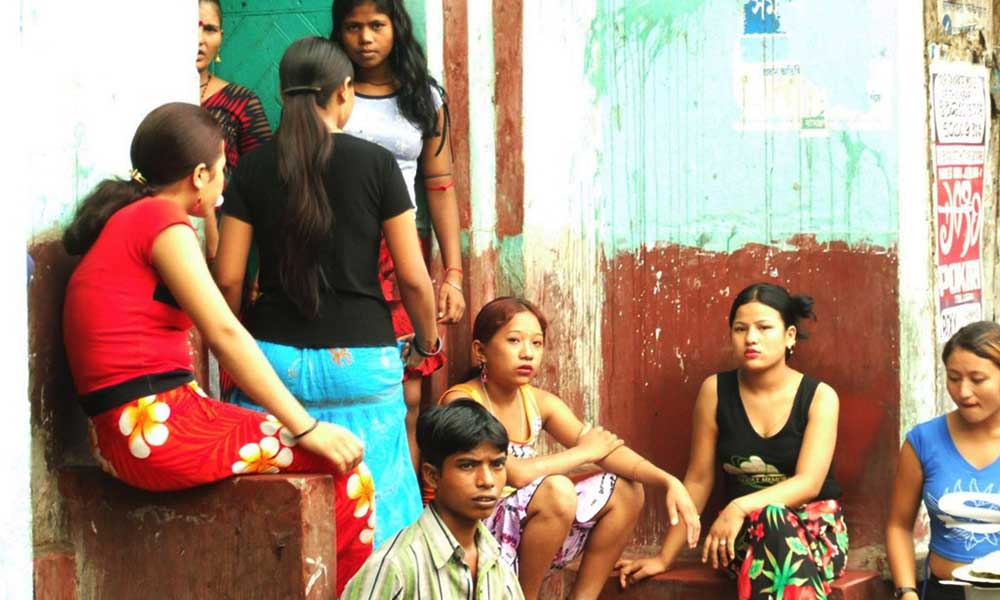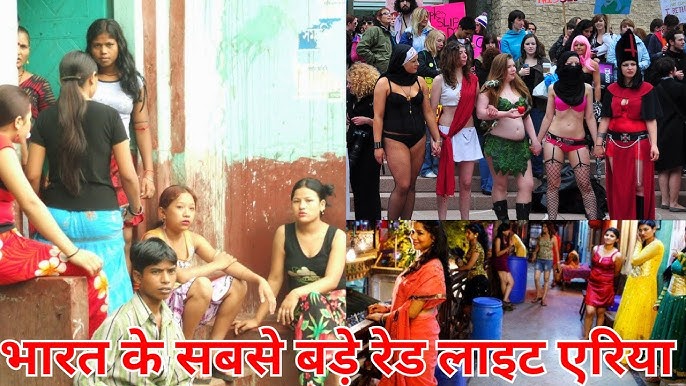India, with its vibrant culture and diverse society, has numerous stories hidden within its bustling streets and cities. Among these are the red-light areas, neighborhoods known for their association with the sex work industry. While this topic is often shrouded in taboo, it is essential to understand the realities of these areas to foster awareness and empathy.
These red-light districts are not just about their reputation but also home to thousands of individuals, each with their struggles and aspirations. They have a deep historical and cultural connection to the cities they serve and play a significant role in highlighting broader issues such as human rights, poverty, and gender equality.
What is a Red-Light Area?
A red-light area is a designated neighborhood or district within a city known for commercial sex work and other related activities. These areas are typically hubs where sex workers reside and conduct their work, and they often attract clients from various walks of life. While the term “red-light area” carries a social stigma, it is a reality in many countries, including India, where these neighborhoods have existed for centuries.
Red-light areas are not just places of commerce; they are home to diverse communities that include sex workers, their families, and support networks. A mix of challenges, such as poverty, exploitation, and lack of access to healthcare and education, often marks these neighborhoods. At the same time, they are vibrant spaces where people live, work, and dream of better opportunities.
In India, red-light areas are often linked to the broader social issues of human trafficking, gender inequality, and economic disparity. While they may be viewed from a lens of morality or legality, it’s essential to recognize the humanity of those living and working in these areas and to address their needs with compassion and understanding.
Why Is Understanding Red-Light Areas Important?
Exploring and understanding red-light areas is crucial for several reasons. These districts are not just spaces of commerce but also mirror deep-rooted societal, economic, and cultural issues. Recognizing their significance can lead to better policies, societal understanding, and support for vulnerable communities. Below are the key reasons why this topic matters:
Highlighting Socio-Economic Inequalities
- Red-light areas often emerge in regions with significant poverty and a lack of opportunities.
- Many sex workers enter the industry due to financial hardships, low education, or lack of alternative livelihoods.
- Understanding these areas helps shed light on the urgent need for economic reforms and support systems.
Addressing Human Trafficking and Exploitation
- Many individuals in red-light areas, especially women and children, are victims of trafficking.
- By studying these areas, we can identify patterns and work towards preventing exploitation and abuse.
- Creating awareness and implementing stricter laws can help rescue and rehabilitate victims.
Advocating for Human Rights
- Sex workers often face stigma, discrimination, and a lack of fundamental rights like healthcare and safety.
- Raising awareness about the realities of these areas can promote policies that safeguard their human rights.
- Decriminalizing sex work and focusing on their welfare can reduce the vulnerability of workers.
Promoting Public Health Awareness
- Red-light areas are significant in the context of public health, especially concerning sexually transmitted infections (STIs) like HIV/AIDS.
- Educating communities and providing access to healthcare in these areas is vital for broader public health goals.
Breaking Social Stigma
- Red-light areas are often viewed with judgment and prejudice, which further marginalizes the people living there.
- Understanding these communities fosters empathy and breaks down stereotypes.
- Open dialogue can lead to greater societal acceptance and support.
Influencing Policy and Legislation
- Knowledge about red-light areas helps policymakers create effective laws that balance societal concerns with the rights of individuals.
- Focused interventions, like education programs and economic upliftment schemes, can address the root causes of exploitation.
By delving into the realities of red-light areas, we take a step closer to building a society that values dignity, equality, and justice for all. This understanding is not just about the places themselves but about addressing the more significant issues they symbolize.

Step-by-Step Guide to Understanding and Supporting Red-Light Areas
Addressing the complexities of red-light areas requires a well-informed and empathetic approach. Here’s a step-by-step guide to understanding these communities and contributing meaningfully to their betterment:
Step 1: Educate Yourself
- Read and Research: Start by learning about red-light areas, their history, and socio-economic dynamics.
- Understand Context: Recognize the cultural, legal, and societal factors that influence these districts.
- Stay Updated by Following news, reports, and case studies on the challenges and developments related to red-light areas.
Step 2: Acknowledge the Human Stories
- Listen Without Judgment: Understand the personal stories of individuals living and working in red-light areas.
- Recognize Diversity: Each person has a unique reason for being in these areas; avoid stereotypes.
- Empathize: Treat their struggles and aspirations with compassion.
Step 3: Support Awareness Campaigns
- Join Initiatives: Participate in programs that aim to reduce stigma and spread awareness about red-light areas.
- Share Knowledge: Use social media or community forums to share accurate information.
- Advocate for Change: Voice your support for policies that protect the rights of sex workers and their families.
Step 4: Focus on Education and Empowerment
- Promote Education: Support organizations that provide education for children in red-light areas.
- Skill Development: Encourage initiatives that teach alternative livelihood skills to sex workers.
- Community Centers: Back the development of safe spaces for learning, counseling, and recreation.
Step 5: Contribute to Public Health Efforts
- Support Healthcare Access: Advocate for free and accessible healthcare services, including STI prevention and treatment.
- Spread Awareness: Help educate about safe practices and public health within these communities.
- Collaborate with NGOs: Partner with organizations providing health camps and resources.
Step 6: Advocate for Legal Reforms
- Decriminalization: Support efforts to decriminalize sex work while ensuring regulations against trafficking.
- Policy Advocacy: Engage with policymakers to draft laws focusing on safety and dignity for sex workers.
- Promote Rehabilitation: Encourage government and NGO programs for those who wish to leave sex work.
Step 7: Volunteer or Donate
- Partner with NGOs: Join organizations working directly with communities in red-light areas.
- Financial Support: Donate to causes that fund healthcare, education, and rehabilitation programs.
- Time and Skills: Offer your expertise, such as teaching or counseling, to help these communities thrive.
Step 8: Spread Empathy, Not Judgment
Challenge Stereotypes: Speak out against derogatory remarks or misinformation about red-light areas.
Promote Inclusive Dialogues: Foster discussions that focus on the dignity and rights of individuals.
Lead by Example: Show respect and understanding in your interactions and advocacy efforts.
Advantages and Disadvantages of Red-Light Areas
Red-light areas, like many socio-economic phenomena, come with their own set of advantages and disadvantages. While these areas often spark debate, understanding their multifaceted nature helps in approaching the topic with balance and nuance.
Advantages of Red-Light Areas
- Economic Opportunities
- Provides a source of income for individuals who may lack access to traditional employment opportunities.
- Supports local economies by generating commerce in surrounding areas.
- Regulated Spaces for Sex Work
- In areas where sex work is partially regulated, red-light districts can help ensure the safety and organization of workers.
- Regulation reduces risks of exploitation and trafficking when implemented effectively.
- Public Health Management
- Concentrated areas make it easier to implement public health initiatives like STI prevention and treatment programs.
- NGOs and healthcare providers often use red-light areas to target vulnerable populations.
- Cultural and Historical Significance
- Many red-light areas hold historical importance, contributing to the cultural identity of cities.
- They are a reminder of societal issues like economic disparity and gender inequality, sparking meaningful conversations.
- Safety and Oversight
- A designated area for sex work can reduce the occurrence of unregulated and unsafe practices in other parts of the city.
- Helps law enforcement and NGOs monitor and address issues like trafficking and exploitation.
Disadvantages of Red-Light Areas
- Stigma and Discrimination
- People living and working in these areas face intense social stigma and are often marginalized by society.
- Discrimination makes it harder for sex workers and their families to access education, healthcare, and alternative employment.
- Exploitation and Trafficking
- Many individuals, especially women and children, are coerced or trafficked into sex work.
- Lack of proper regulation in some areas can lead to rampant exploitation.
- Health Risks
- High prevalence of sexually transmitted infections (STIs) due to limited access to proper healthcare in many districts.
- Mental health challenges, including stress and trauma, are common among sex workers.
- Legal and Policy Challenges
- Ambiguity in laws regarding sex work often leaves workers unprotected and vulnerable to harassment.
- The lack of a clear legal framework complicates efforts to address issues like trafficking and violence.
- Living Conditions
- Red-light areas often have poor infrastructure, overcrowding, and unhygienic living conditions.
- Limited access to essential services like clean water, education, and sanitation affects the quality of life.
- Impact on Families and Children
- Children growing up in red-light areas often face bullying, lack of education, and restricted opportunities.
- Families living in such areas are caught in cycles of poverty and marginalization.
FAQs About Red-Light Areas
What is a red-light area?
A red-light area is a neighborhood or district where commercial sex work takes place. These areas are often home to sex workers, their families, and communities, and they sometimes serve as hubs for related activities.
Why are red-light areas called “red-light” areas?
The term originates from the practice of using red lights to signal establishments offering adult entertainment. Over time, the name became synonymous with districts known for commercial sex work.
Are red-light areas legal in India?
In India, sex work itself is not illegal, but activities related to it—such as brothel keeping, pimping, and solicitation—are criminalized. This creates a gray area where workers often face legal challenges.
What are the largest red-light areas in India?
Some of the most well-known red-light areas in India include:
- Sonagachi (Kolkata)
- Kamathipura (Mumbai)
- GB Road (Delhi)
- Budhwar Peth (Pune)
- Meergunj (Allahabad)
How can red-light areas impact public health?
Red-light areas are often focal points for public health initiatives, particularly in the prevention and treatment of sexually transmitted infections (STIs) like HIV/AIDS. Efforts in these areas can help improve health outcomes for workers and the broader community.
Why do people work in red-light areas?
Many individuals turn to sex work due to poverty, lack of education, financial emergencies, or limited job opportunities. Others may be coerced or trafficked into this line of work.
Are red-light areas safe for visitors?
While some red-light areas are monitored and have safety measures in place, others may be more prone to crime or exploitation. Visitors should exercise caution and respect the communities that live there.
Conclusion
Red-light areas are complex spaces that reflect deeper societal issues like poverty, inequality, and exploitation. While they provide economic opportunities for some, they also highlight the challenges of stigma, safety, and lack of resources. By addressing these challenges with empathy, awareness, and actionable reforms, we can work towards creating a society where every individual is treated with dignity and given equal opportunities for a better future.
